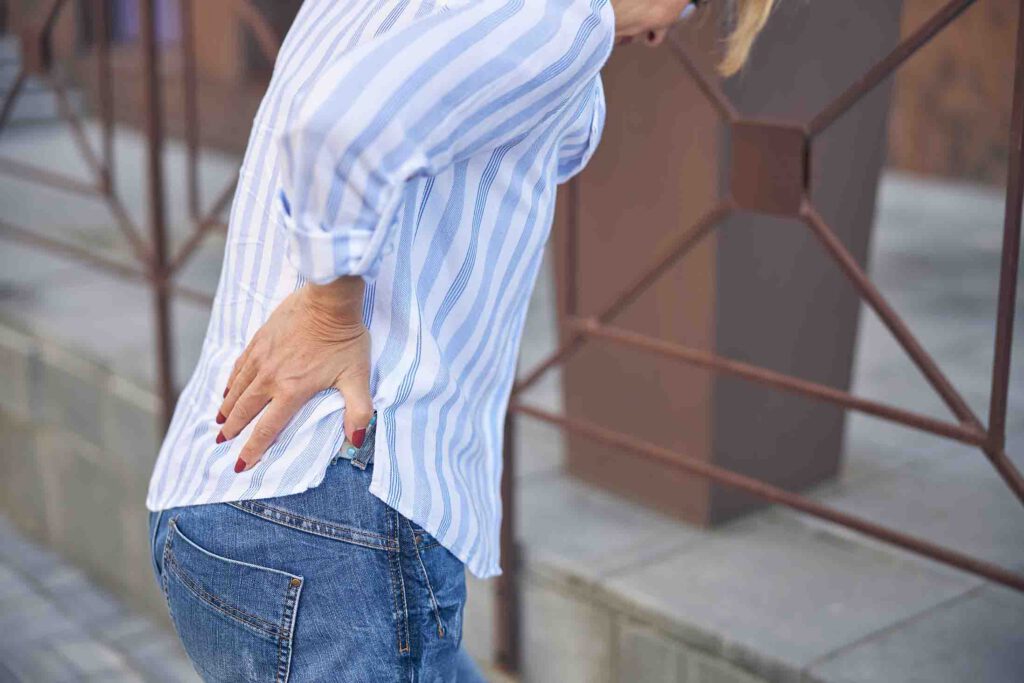
You’ve probably heard of “slipped discs” before, but do you really know what they are and how they’re treated?
A slipped disk, or herniated disk, is a common condition that can cause pain in the lower back and legs. In many cases, it can be treated with conservative methods like physical therapy or pain medication.
However, if the disk slips out of place and presses on a nerve, surgery may be necessary to relieve the pressure. Here’s what you need to know about this common condition.
What Is a Slipped Disk?
A slipped disk, also known as a herniated disk, is a condition that occurs when one of the rubbery cushions between the vertebrae in your spine pushes out. This can happen when the outer layer of the disk tears.
Slipped discs are most common in the lower back, but they can also occur in the neck and middle back. The condition is more common in men than women, and it usually affects people between the ages of 30 and 50.
Most people think that only older people are at risk for slipped discs, but that’s not actually the case. In fact, it’s more common in younger people, especially those who are active and do a lot of strenuous activities.
What Are the Causes of a Slipped Disk?
A slipped disk can occur when one of the disks that sit between the bones in your spine cracks or breaks. This can happen due to a variety of reasons, including:
Age-related changes. As you get older, the disks in your spine begin to wear out and become less flexible. This makes them more susceptible to injury.
Injury. A fall or other type of accident can cause a disk to rupture.
Obesity. Excess weight puts extra pressure on the disks in your spine.
Repetitive motions. Repeating the same movements over and over again can put a strain on the disks in your spine and lead to a slipped disk.
You’re more likely to experience a slipped disk if you do a lot of heavy lifting or if you’re pregnant.
But other things can contribute to a slipped disk, like bad posture or sitting in the same position for too long. And if you already have a disk that’s been damaged, that makes you more susceptible to future problems.
How Can You Treat a Slipped Disk?
So how can you treat a slipped disk? There are a number of ways to treat a slipped disk, depending on the severity of the injury.
For minor injuries, bed rest and over-the-counter pain medication may be enough to allow the disk to heal properly.
More severe injuries may require physical therapy or surgery.
If you have a slipped disk, it is important to see a spine surgeon as soon as possible to receive the proper treatment. Ignoring the problem will only make it worse in the long run.
Options for treating a slipped disk include:
- Spine surgery
- Physical therapy
- Pain medication
- Chiropractic care
- Massage
What Are the Risks of a Slipped Disk?
You might be wondering what the risks of a slipped disk are. Well, let’s take a look.
Slipped discs are more common in men than women. However, the risk of a slipped disk is not limited to one gender. Anyone can suffer from a slipped disk, regardless of their sex. The most common risk factor for a slipped disk is age.
As we age, our disks begin to degenerate and lose their elasticity. This can cause the discs to bulge or herniation. Other risk factors for a slipped disk include obesity, smoking, and having a sedentary lifestyle.
When Should You See a Spine Surgeon for a Slipped Disk?
The vast majority of slipped discs occur in the lumbar or lower back region. If you have pain that radiates from your back into your buttocks and down your legs, it’s likely caused by a lumbar slipped disk.
In addition to pain, other symptoms may include:
- Numbness
- Tingling
- Muscle weakness
If you experience any of these symptoms, it’s important to see a spine surgeon for a diagnosis. A spine surgeon can determine the best course of treatment for your individual case.

